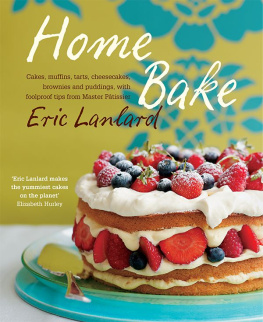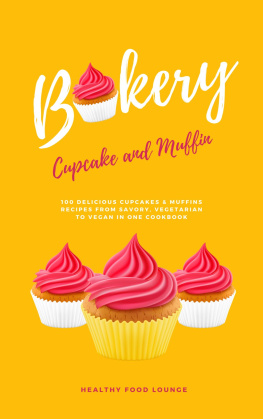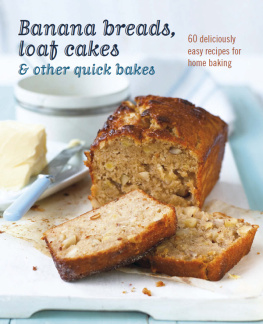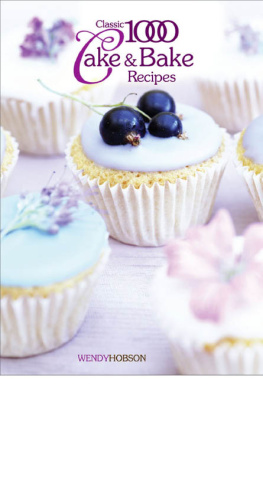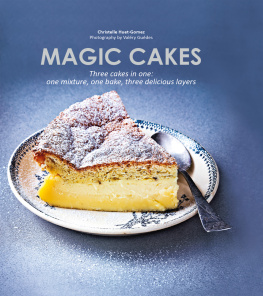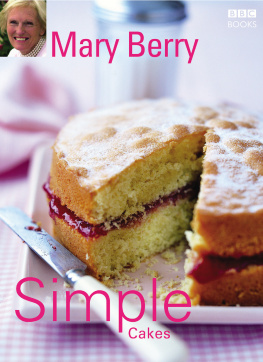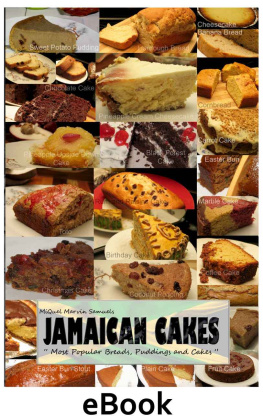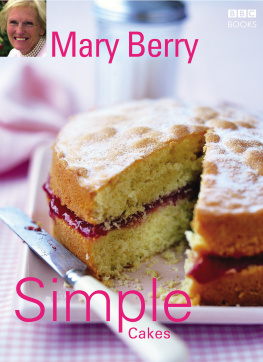Introduction
I am often asked what made me become a ptissier, and where my love of baking came from. Neither my parents nor any of my relatives were in the profession, but as a child I was surrounded by food. If during the week our meals were simple, the weekend would turn into a culinary odyssey. Every Saturday my mum would prepare the most amazing lunch. She would go to a lot of trouble finding new recipes and no two Saturday meals were ever the same. Looking back, I really appreciate the effort that went into those weekend feasts! Of course, there was always a cake involved, and I remember fondly those beautiful tarts, gteaux and loaves that came out of the oven and the delicious aroma that met you when you entered the house. It was even more exciting when we went to stay with my grandmother, Mamie Camille, as we would go shopping at the market first thing in the morning to pick the best seasonal ingredients. My sister, Christine, and I would pretend that we were cooking for some fabulous manor house or castle!
So, yes, my family inspired me with their love of food and entertaining. As I started to experiment with recipes from the age of six I fell in love with the ingredients, the creativity and the techniques involved in making delicious and beautiful cakes. I learned quickly that you needed discipline, the right equipment and patience if you wanted to succeed. All of this was confirmed when I started my apprenticeship at the age of 18. I thought I knew it all and wanted to make the most ambitious pieces possible. I was reminded, however, that I should learn the basics first in order to understand how it all worked before moving on to bigger challenges.
Baking is not like regular cooking and this is where most people fail. If you dont know enough about the ingredients and how they interact with each other, you can experience disaster. To avoid this, you should always read and follow the instructions in the recipes, but of course, there is a big difference between home baking and the fine cakes that adorn ptisserie windows. Home baking should be accessible, enjoyable and rewarding and, most importantly, stress-free. It is a perfect way in which to entertain the kids and teach them about good-quality food and the benefits of cooking at home. And you have the satisfaction of presenting fantastic desserts and cakes for every occasion.
In this book I introduce you to my favourite home-baking recipes, the ones I use at home when I entertain my family and friends, when I want to treat somebody or just because I feel like doing something different from what I produce at work. Baking is enjoying a huge revival, and with these straightforward recipes and multiple variations, you will be able to create delicious treats and become popular with your family and friends. But remember, follow the recipes carefully, only buy the best ingredients and, primarily, enjoy yourself!
Happy baking!
Eric
Sponge cakes
A good sponge should have a very light and airy texture. This is achieved by either beating the eggs and sugar to a foam, or by incorporating whipped egg white into the cake mixture. The principal technique of sponge-making involves retaining all this lovely air in the mixture when adding the flour or other dry ingredients.
These lovely, moist sponges are delicious on their own, or filled with creams, fresh fruits or home-made curds or preserves. They keep very well in airtight containers or old-fashioned cake tins. The fridge is usually a no-no, as this makes sponges harder and tighter in texture.
There are a few rules that should be followed for success. Firstly, all of the ingredients should be at room temperature before you start. Adding fridgecold eggs to the butter and sugar mixture will result in it curdling, making the cake more dense. And once you have combined the dry and wet ingredients, put your cake in the oven straightaway, as the baking powder will start to do its job immediately; it will be less effective if it is left for a period of time before being cooked. I would also advise you to buy an oven thermometer, because ovens vary in temperature quite dramatically.
Make sure your ingredients are fresh. Once you have opened baking powder or self-raising flour, keep it for no longer than a month. After that, both will begin to lose their effectiveness, so your cakes wont rise properly. Almonds and spices should also be kept open for no longer than a month, unless they are stored in airtight containers.
SPONGE CAKES
Classic Cake Boy chocolate sponge
I sell this in my London-based cafeptisserie, Cake Boy. I always use melted chocolate in chocolate sponge recipes; I find cocoa powder less rich and tasty.
Serves 6
Preparation time: 20 minutes
Cooking time: 35 minutes
- 150g (5oz) unsalted butter, softened, plus extra for greasing
- 150g (5oz) good-quality dark chocolate, broken into pieces
- 150g (5oz) caster sugar
- 5 eggs
- 150g (5oz) self-raising flour
- 1 tsp baking powder
Preheat the oven to 180C (fan 160C)/350F/gas mark 4. Grease a 20cm (8in) round sandwich tin with extra butter, and base-line with baking paper.
Put the chocolate pieces in a heatproof bowl that fits over a pan of gently simmering water (the base must not touch the water), and stir until it melts. Leave to cool slightly.
Meanwhile, cream the butter and sugar together in a large bowl, using an electric hand whisk on a medium-high speed, until light and fluffy. Lightly beat the eggs and gradually whisk them in until creamy and well combined. Sift the flour and baking powder into the bowl, and fold these in gently, using a large metal or rubber spatula. Finally, fold in the melted chocolate. You should have a smooth mixture.
Pour the mixture into the prepared tin, smooth the top and bake in the preheated oven for 35 minutes or until a metal skewer inserted into the centre comes out clean. Turn out on to a wire rack and peel away the paper. Leave to cool.
This sponge cake tastes wonderful filled with or ganache.
SPONGE CAKES
Classic Cake Boy vanilla sponge
This is a more traditional sponge recipe for making a Victoria sandwich cake. It is not as light as the , but works better as a tea-time cake than a dessert cake. Its another favourite at my cafeptisserie, Cake Boy.
Serves 6
Preparation time: 20 minutes
Cooking time: 1820 minutes
- 175g (6oz) unsalted butter, softened, plus extra for greasing
- 175g (6oz) golden caster sugar

